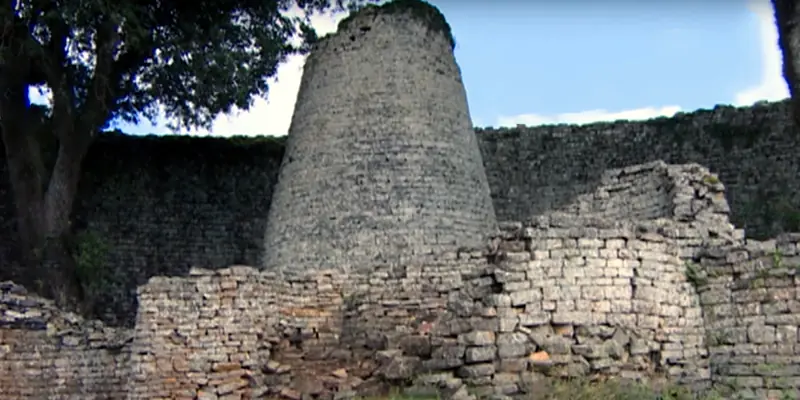Early African Civilizations History
History of the Great Zimbabwe Empire
We go over the history of the Great Zimbabwe Empire in this post. Between the eleventh and the fifteenth centuries AD, the Great Zimbabwe Empire flourished in what is now Zimbabwe, Southern Africa. The empire, which is well-known for its magnificent stone constructions, left behind a rich heritage that fascinates historians and archaeologists even now. The Great Zimbabwe remains, which include the well-known Great Enclosure and Hill Complex, are evidence of the architectural mastery and cultural accomplishments of the empire. The Great Zimbabwe Empire made a lasting impact on African history by accumulating substantial riches and power through long-distance trade and advantageous location. Furthermore, we take a somewhat different approach to learning about the Great Zimbabwe Empire by answering a few often asked questions about this magnificent African civilization.
Table of Contents
- What was the Great Zimbabwe Empire?
- How did the Empire rise to power?
- What were the key achievements of Great Zimbabwe?
- What led to the decline of the Great Zimbabwe Empire?
- Who were the people of Great Zimbabwe?
- What role did religion play in the Great Zimbabwe Empire?
- How has the Empire influenced modern-day Zimbabwe?
- Conclusion

What was the Great Zimbabwe Empire?
The Great Zimbabwe Empire, a Shona-speaking civilization predominated southern Africa between the eleventh and fifteenth centuries. It was well know for its stone monuments such as the well-known Great Enclosure. Its capital named Great Zimbabwe, was a prosperous capital displaying architectural and political genius. Driven by thriving trading networks, its architectural masterpieces served a symbol of the empire’s great wealth and power. Trade between the empire and far-off Swahili coastal settlements and beyond involved the trade of gold and ivory for foreign items such as glass beads and textiles. Even though the precise causes of its demise are still unknown, the Great Zimbabwe Empire’s legacy lives on.
How did the Empire rise to power?
Several interrelated causes combined to create the complicated approach of the Great Zimbabwe Empire’s ascent. It had an abundance of gold deposits and a prime location along important trade routes, which added to its rise. In addition to gold they had a strong agricultural system and network. A strong, centralized leadership formed, bringing together previously separate chiefdoms and encouraging innovation and cross-cultural interaction. The exact specifics are still up for debate, but economic prosperity, political consolidation, strategic placement, and cross-cultural interaction all contributed to the Great Zimbabwe Empire’s rise to prominence in Southern Africa.
What were the key achievements of Great Zimbabwe?
The achievements of the Great Zimbabwe Empire go beyond its architectural wonders. Its economic might, supported by thriving markets and the profitable gold trade, solidified its standing as a regional power. The empire’s sophisticated social structure and distinctive creative expressions served as highlights of its thriving culture. Its position as a powerful force in African history was cemented by its centralized political framework, which notably guaranteed stability and control. In short, it added to the foundational knowledge of architecture, economics, increased cultural sophistication, and improved the form of centralized politics. The present ruins are a reminder of the ingenuity and achievements of the people of this remarkable civilization, which inspires appreciation for this civilization.
What led to the decline of the Great Zimbabwe Empire?
Historians continue to debate on the Great Zimbabwe Empire’s demise. Changes in the surrounding environment, changes in trade routes, internal strife, and the rise of rival neighboring states are all plausible factors that led to its demise. Furthermore, the fall of the empire was accompanied in the area by the emergence of other strong African civilizations.
Who were the people of Great Zimbabwe?
The Shona, a Bantu-speaking group who came in the area around 400 CE, were the primary builders and occupants of the Great Zimbabwe Empire. They were skilled traders, farmers, and herders who laid the groundwork for the empire’s financial prosperity. The Shona are credited with erecting the incredible Great Enclosure and other stone structures as evidence of their exceptional architectural ability. Even though the Shona were the dominant population, they traded with nearby communities such as the Venda and Swahili traders. These exchanges impacted the empire’s cultural environment, leading to advancements in technology and artistic diversity.
What role did religion play in the Great Zimbabwe Empire?
The exact religious details about the Great Zimbabwe Empire are unknown. Examining cultural materials and Shona traditions has shown a belief system centered on the creator god Mwari and ancestral spirits known as Vadzimu. Offerings, sacrifices, and divination were probably common in rituals, and the Great Enclosure may have been a center of worship. This belief system’s legacy continues to affect modern Zimbabwean culture and spirituality. However, more research is required to fully comprehend the empire’s diverse theological landscape.
How has the Empire influenced modern-day Zimbabwe?
The Great Zimbabwe Empire continues to have a significant impact on modern-day Zimbabwe. Its legacy influences national identity and inspires artistic and political expression. The ruins are a source of national pride, appearing on the coat of arms, currency, and structures. Traditional Shona dances recall old rituals while the famous soapstone birds find modern interpretations. The ruins are a major tourist attraction, generating significant revenue and job opportunities. Studying the empire has great educational value, helping Zimbabwean youth develop a stronger feeling of belonging and cultural appreciation. It acts as a source of national pride and a reminder of the country’s rich history and cultural heritage.
Conclusion
The historical and cultural significance of the Great Zimbabwe Empire is immense. It is a representation of the ingenuity and accomplishments of early African civilizations. Today, the site is recognized as a UNESCO World Heritage Site, which preserves its heritage and attracts visitors from all over the world.The Great Zimbabwe Empire remains a fascinating topic in African history. Furthermore, the mystery and splendor of this ancient civilization’s architectural achievements and economic prosperity, which serve as an unmistakable link to the past, have captivated the world. In conclusion, as we continue to unravel its mysteries, the Great Zimbabwe Empire will undoubtedly be a fascinating source of information and a valuable aspect of African history for many years to come.
